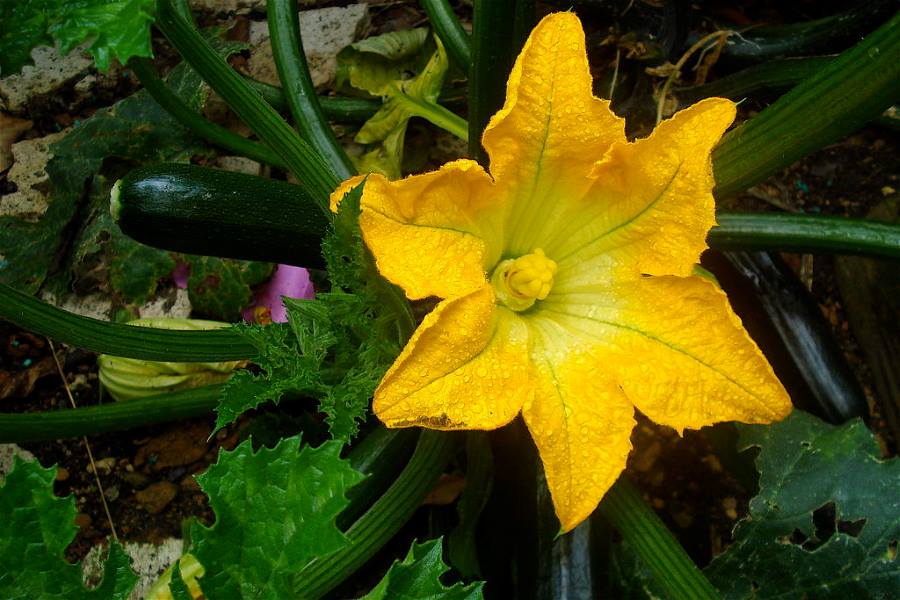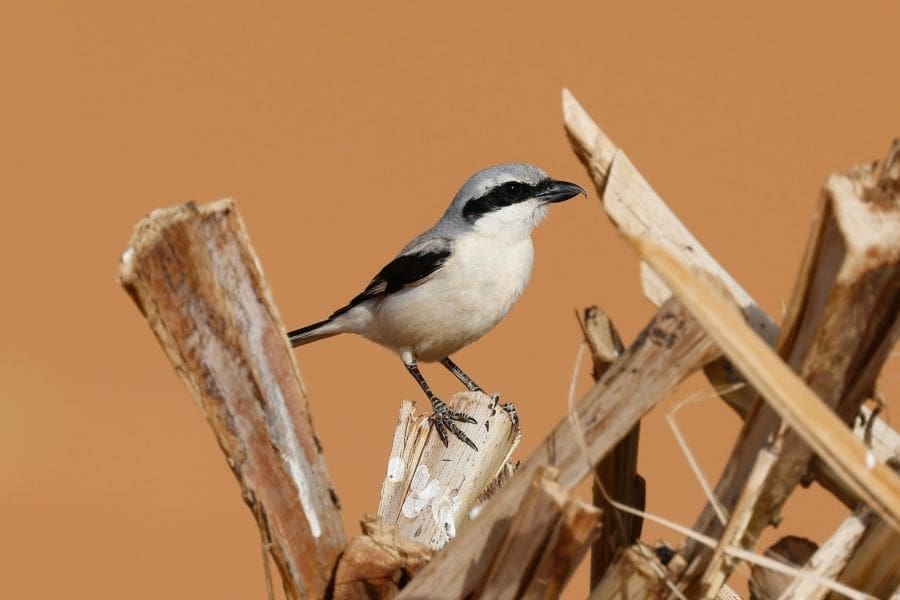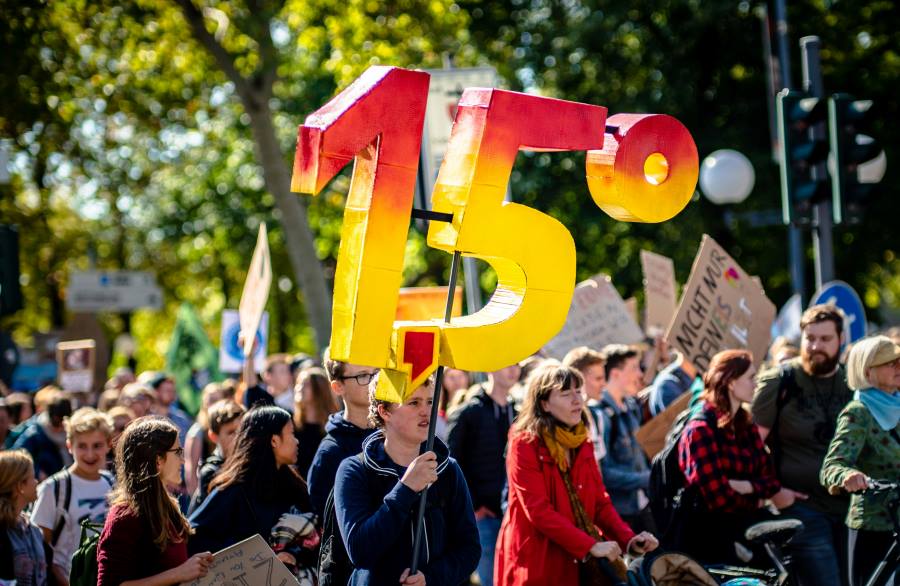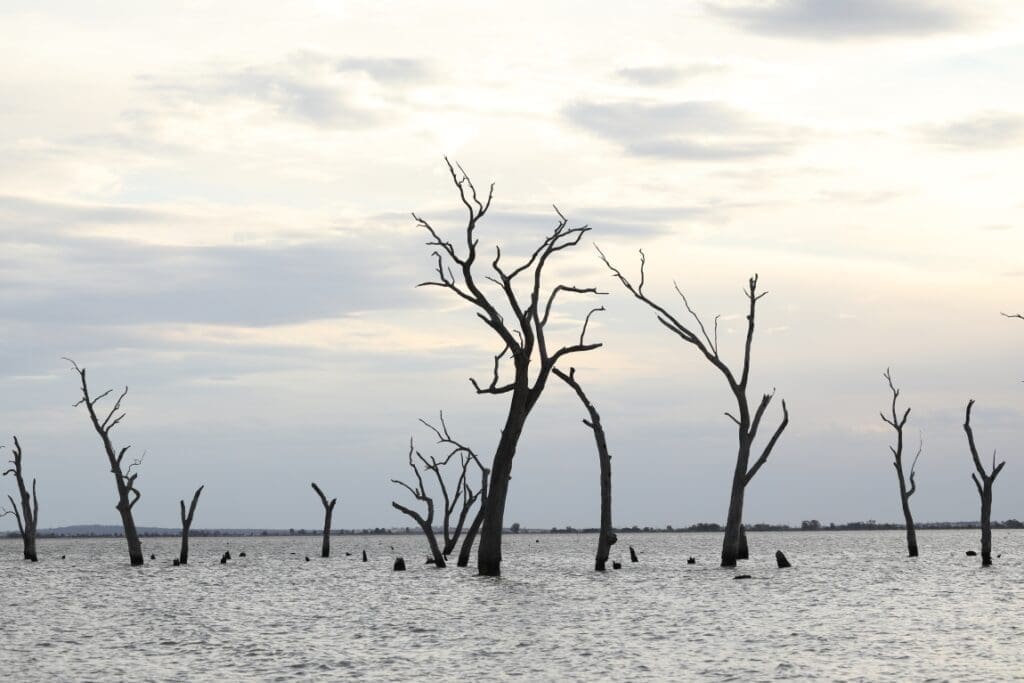Explore the latest insights from top science journals in the Muser Press daily roundup (June 26, 2025), featuring impactful research on climate change challenges.
In brief:
Droughts can reduce the caloric value of flower nectar by up to 95%, study finds
A study supported by FAPESP indicates that projected droughts by the end of this century could reduce the caloric value of flower nectar by up to 95%. This would harm pollinators, such as bees, as well as plants that depend on cross-pollination to reproduce and bear fruit, such as zucchini (Cucurbita pepo). In a less drastic scenario with a 30% reduction in rainfall, the drop was 34%.
The results were published in the journal Scientific Reports.
“In terms of calories potentially lost in the nectar, this is equivalent to more than a ton of sugar per hectare, from 1,325 to 71 kilos. Without nectar to consume, the bees leave, the plants don’t reproduce, and the farmers lose production,” explains Elza Guimarães, a professor at the Botucatu Institute of Biosciences of São Paulo State University (IBB-UNESP) in Brazil and coordinator of the study.
Guimarães is also affiliated with the Center for Research on Biodiversity Dynamics and Climate Change (CBioClima), a FAPESP Research, Innovation, and Dissemination Center (RIDC) based at the UNESP Institute of Biosciences in Rio Claro.

Their work showed that an increase in rainfall positively affected an increase in nectar calories by 74%. However, the researchers point out the problems of heavier rainfall events in a wider ecological context.
“A high frequency and intensity of rainfall can have devastating consequences for plants, flower visitors such as birds and insects, and the maintenance of interactions between plants and pollinators,” says Maria Luisa Frigero, the study’s first author, who conducted the research during her master’s program at IBB-UNESP.
For example, the authors cite the decrease in pollinator activity during rainy periods. Heavy rains make it difficult for pollinators to fly and regulate their body temperature, so they require more energy to search for food. Additionally, increased erosion and loss of nutrients affect crops.
Experiments
These experiments were conducted on zucchini plants grown in a greenhouse and irrigated to simulate the rainfall patterns of the past 40 years in September, the month in which the plants are typically cultivated in the Botucatu region. The scenarios of increased and decreased rainfall are those predicted by the Intergovernmental Panel on Climate Change (IPCC) for the end of the century.
One hundred and twenty plants were grown under equal temperature, nutrient, and water conditions until the first leaves sprouted. After this period, the plants were divided into four groups of 30. Each group received a different treatment to simulate different rainfall conditions.
One control group remained within the normal rainfall regime for the time of year in the region. The other groups received an amount of water proportional to decreased (30% reduction), increased (57% increase), or drought (decrease equivalent to 80% of normal rainfall followed by irrigation proportional to extreme rainfall) scenarios. This simulated the effect of prolonged drought followed by heavy rain.
To ensure that no insects consumed the nectar, the plants were monitored for 60 days in a closed greenhouse. During this time, the amount of nectar and total sugars produced by each flower and plant was measured. The data also enabled the estimation of nectar and sugar production per planted area.
Although these results are from experimental work in a greenhouse with a cultivated species, the authors believe they strongly indicate what can happen in natural environments and with other agricultural crops. This study included the collaboration of Carmen Boaro, a physiologist and professor at IBB-UNESP, and Leonardo Galetto, an ecologist at the National University of Córdoba in Argentina.
“We’re now exploring the effects of climate change on native and cultivated plant species by testing the impact of heat waves and other extreme events. Another development of this study is the investigation of how bees react to the changes that occur in flowers in this context, by means of behavioral analyses,” says Priscila Tunes, co-author of the work, who is doing a post-doctorate at IBB-UNESP with a scholarship from FAPESP and is currently doing an internship at Queen Mary University of London in the United Kingdom.
Journal Reference:
Frigero, M.L.P., Boaro, C.S.F., Galetto, L. et al., ‘Extreme events induced by climate change alter nectar offer to pollinators in cross pollination-dependent crops’, Scientific Reports 15, 10852 (2025). DOI: 10.1038/s41598-025-94565-2
Article Source:
Press Release/Material by André Julião | Fundação de Amparo à Pesquisa do Estado de São Paulo (FAPESP)
500 bird species face extinction within the next century
Climate change and habitat loss could cause more than 500 bird species to go extinct in the next 100 years, researchers from the University of Reading have found.
Their study, published in Nature Ecology & Evolution, reveals this number is three times higher than all bird extinctions recorded since 1500 CE. The extinction of vulnerable birds such as the bare-necked umbrellabird, the helmeted hornbill, and the yellow-bellied sunbird-asity would greatly reduce the variety of bird shapes and sizes worldwide, harming ecosystems that depend on unique birds like these for vital functions.

The scientists found that even with complete protection from human-caused threats like habitat loss, hunting and climate change, about 250 bird species could still die out.
Kerry Stewart, lead author of the research from the University of Reading, said: “Many birds are already so threatened that reducing human impacts alone won’t save them. These species need special recovery programmes, like breeding projects and habitat restoration, to survive.
“We face a bird extinction crisis unprecedented in modern times. We need immediate action to reduce human threats across habitats and targeted rescue programmes for the most unique and endangered species.”
Bigger threats for bigger birds
The researchers examined nearly 10,000 bird species using data from the IUCN Red List. They predicted extinction risk based on the threats each species faces. The study found that large-bodied birds are more vulnerable to hunting and climate change, while birds with broad wings suffer more from habitat loss.
This research also identified which conservation actions will best preserve both the number of bird species and their ecological functions.
Professor Manuela Gonzalez-Suarez, senior author of the study at the University of Reading, said: “Stopping threats is not enough, as many as 250-350 species will require complementary conservation measures, such as breeding programmes and habitat restoration, if they are to survive the next century. Prioritising conservation programmes for just 100 of the most unusual threatened birds could save 68% of the variety in bird shapes and sizes. This approach could help to keep ecosystems healthy.”
Stopping the destruction of habitats would save the most birds overall. However, reducing hunting and preventing accidental deaths would save birds with more unusual features, which are especially important for ecosystem health.
Journal Reference:
Stewart, K., Venditti, C., Carmona, C.P. et al., ‘Threat reduction must be coupled with targeted recovery programmes to conserve global bird diversity’, Nature Ecology & Evolution (2025). DOI: 10.1038/s41559-025-02746-z
Article Source:
Press Release/Material by University of Reading
Women and young people particularly concerned about climate change, study
According to the study, the belief that climate change is a real threat and entails significant risks, as well as the perceived consensus among climate scientists on the causes and dangers of global warming, are also closely associated with climate anxiety.
“It correlates negatively with well-being, but climate anxiety is also positively linked to both individual and collective environmentally friendly behaviour and support for climate policy measures,” says the paper’s lead author, Dr Clara Kühner of the Wilhelm Wundt Institute of Psychology at Leipzig University. The climate crisis and its consequences are frightening for many people.
Accordingly, climate anxiety – that is, fears and worries related to climate change – is attracting growing public interest and is increasingly the subject of research. “However, the existing literature is spread across various disciplines and has not yet been summarised quantitatively,” says the psychologist.

This new meta-analysis, which examines the relationship between climate anxiety and 33 other constructs, is intended to give researchers and practitioners an overview of the potential effects and likelihood of climate anxiety occurring. The analysis included 94 primary studies with a total of 170,747 participants from 27 countries.
According to Kühner, the observed correlations varied in part depending on how climate anxiety was measured. The quality of the primary studies also played a role, with some relationships appearing stronger in higher-quality studies. The researchers also found that climate anxiety is conceptually distinct from general, non-climate-related anxiety – making it a phenomenon in its own right.
“The findings suggest that climate anxiety is a double-edged sword. It can impair well-being, but it can also serve as a driver for climate action,” says co-author Professor Hannes Zacher of Leipzig University. Rather than dismissing legitimate concerns about climate change, public figures such as politicians, journalists and business leaders should help people channel climate anxiety into the urgently needed action to tackle the climate crisis. The researchers recommend targeted support for those who are particularly prone to climate anxiety, such as young people or those frequently confronted with the issue.
Given the strong public and academic interest in climate anxiety, and the continued publication of primary studies on the topic, the meta-analysis will be updated regularly with new data in the coming years. Some of the findings will also be explored in more depth – for example, the still unclear relationship between knowledge about climate change and climate anxiety.
Almost three-quarters of the studies included in the analysis were conducted in the Global North. However, the Global South is likely to be even more severely affected by climate change, meaning that the potential predictors and consequences of climate anxiety may differ in these regions. The researchers therefore argue that more research is needed on climate anxiety in countries of the Global South.
Journal Reference:
Clara Kühner, Corinna Gemmecke, Joachim Hüffmeier, Hannes Zacher, ‘Climate change anxiety: A meta-analysis’, Global Environmental Change 93, 103015 (2025). DOI: 10.1016/j.gloenvcha.2025.103015
Article Source:
Press Release/Material by Leipzig University
Climate change puts thousands of tree species at risk – but there’s still time to act
Trees are essential to life on Earth. They support ecosystems, store carbon, provide clean water, improve our health, and offer countless benefits to people and nature.
In a new study, researchers modeled the future climate exposure (areas where trees will experience conditions they have never faced before) of more than 32,000 tree species worldwide. Their findings reveal that many trees will face conditions far outside what they currently experience – especially under high greenhouse gas emission scenarios.
“We found that nearly 70% of tree species will see significant climate shifts in at least part of their range by the end of this century,” says the study’s lead author Dr. Coline Boonman (Wageningen University). “For some species, over half of their habitat could be affected under an extreme 4°C warming scenario.”

Where will it hit the hardest?
The study, published in PNAS, also mapped “exposure hotspots”, regions where local tree diversity – the number of tree species in a given area – will be most exposed. Hotspots include Eurasia, northwestern North America, northern Chile, and the Amazon Delta. In these places, climate conditions are expected to change so drastically that many species may no longer survive without help.
“This research provides a global map of where trees are most vulnerable to climate change,” explains Dr. Boonman. “It’s a crucial tool for conservation planning and ecosystem resilience.”
Trees, with long lifespans and limited ability to migrate, are especially vulnerable to rapid shifts in temperature and precipitation. Importantly, the study focused only on climate exposure, not other threats like deforestation or invasive species. That means the real risks to trees could be even greater.
Hope, despite the risks
The good news? The researchers also identified climate refugia – areas where conditions are expected to stay relatively stable and could serve as safe havens for trees if the area is protected. These places are vital for long-term conservation efforts.
The findings support urgent conservation actions such as monitoring high-risk species, protecting climate refugia from human activity and considering proactive strategies like assisted migration.
Dr. Josep Serra-Diaz (Botanical Institute of Barcelona, CSIC-CMCNB), co-author of the study highlighted urgent need to safeguard the world’s trees – before it’s too late. “This provides a comprehensive global study that shows were to focus our attention to conserve and where mitigation and adaptation need to be focused, looking a small scale opportunities to keep our treed ecosystems diverse.”
Journal Reference:
C.C.F. Boonman, S. Hoeks, J.M. Serra-Diaz, W. Guo, B.J. Enquist, B. Maitner, C. Merow,& J. Svenning, ‘High tree diversity exposed to unprecedented macroclimatic conditions even under minimal anthropogenic climate change’, Proceedings of the National Academy of Sciences U.S.A. 122 (26) e2420059122 (2025). DOI: 10.1073/pnas.2420059122
Article Source:
Press Release/Material by Spanish National Research Council (CSIC)
Featured image credit: Gerd Altmann | Pixabay




